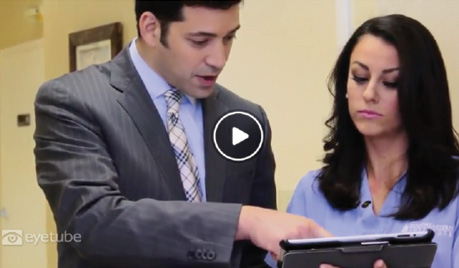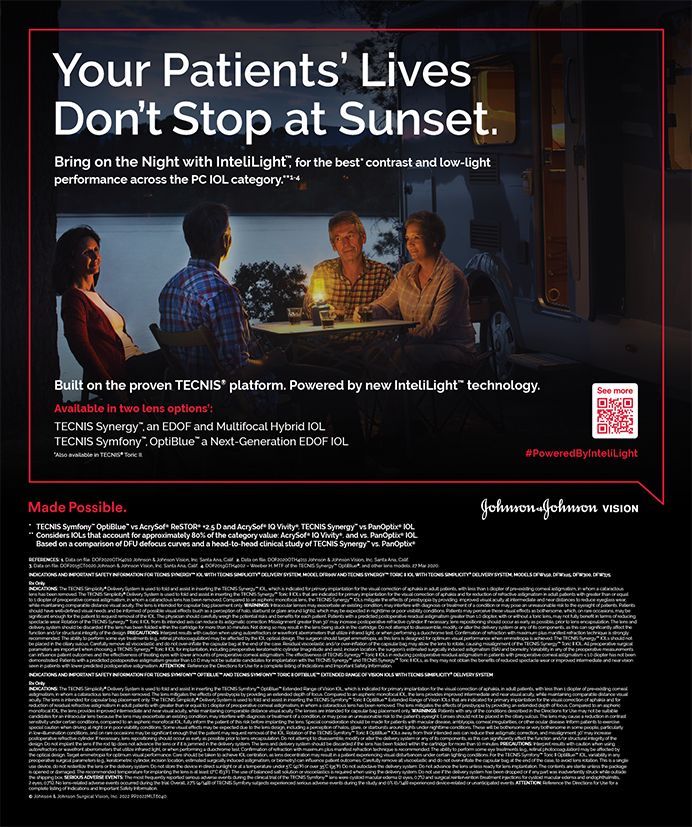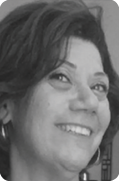
Although the solo practice model is increasingly characterized as an anachronism, David A. Goldman, MD, is turning that viewpoint upside-down with a viable and vibrant solo ophthalmic surgery practice in Southern Florida. Prior to founding Goldman Eye in Palm Beach Gardens, Florida, 3 years ago, this anterior segment surgeon served as assistant professor of clinical ophthalmology at the Bascom Palmer Eye Institute, where he became one of the highest-volume surgeons during the first of his 5 years there.
In an interview with Dr. Goldman about his fledgling practice and his bold decision to go solo, he explains that the flexibility inherent in being able to make practice decisions autonomously more than makes up for any real or perceived shortcomings of sole proprietorship. His entrepreneurial flair, willingness to wear whatever hat it takes to get the job done, and affinity for electronic connectivity have made the solo road the right choice for him.
CONCIERGE CARE
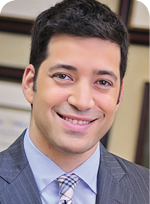
When CRST spoke with Dr. Goldman, the thread that ran through the conversation was giving patients what they want today yet training a keen eye toward what the future health care environment might look like. He says that, despite the solo paradigm’s fading from the zeitgeist, his practice—with its mom-and-pop/concierge feel—“is representative of what we’re going to see in future practices.”

Approximately 20% or fewer ophthalmology practices are owned and operated by a single practitioner, according to estimates by Maureen Waddle, MBA. The principal and senior consultant at Nevada-based BSM Consulting says the decline in solo practices is associated with trends in health care such as rising costs, increasing regulations, and declining reimbursement, among other things. Ms. Waddle says the regulatory demands on today’s practices that did not exist just a generation ago (eg, the Health Insurance Portability and Accountability Act of 1996) can demand dedicated personnel to ensure practice compliance. Such additional expense is easier to absorb when shared among several doctors, Ms. Waddle suggests.
Dr. Goldman agrees that Medicare cutbacks and other things such as accountable care organizations are decreasing the popularity of the solo practice, but he highlights the benefits of this model for him, including flexibility that is elusive in large group practices. “I think, even in today’s tough world of medicine, as long as you make sure to run with a low overhead, you can do well,” he says.
Automation That Enhances the Personal Touch
Having a cloud-based electronic medical record (EMR) system (see Automation That Enhances the Personal Touch) that he says essentially does the work of several staffers is fundamental to his practice’s lean structure and low overhead. “Everything is automated in the practice, so when I finalize a note in my EMR, it takes care of everything automatically; the billing, the coding, the [10th revision of the International Statistical Classification of Diseases and Related Health Problems], the [Current Procedural Terminology] codes, [Physician Quality Reporting System], and meaningful use measurements all get put together,” he remarks. “Then, it bridges over to my practice management system, which is also cloud based. The system automatically, electronically files everything with the various insurance carriers and electronically tracks the remittances. I don’t have to hire a billing person to make sure my codes are right or to make sure we’re getting paid, because everything is automatically done and tracked.”
Eliminating the need for a practice manager and a staffer to perform billing services reduces personnel-related overhead, as does Dr. Goldman’s willingness to assume media/marketing and human resources responsibilities. “This saves so much in overhead,” he comments. “[I have found that] the average ophthalmology practice runs at around 50% to 60% overhead. In the beginning, our overhead was about 24%, and now it’s around 35%, but even at 35%, we can work almost half as much as some larger practices or spend almost twice as much time with each patient and still come out at the same place.”
PRACTICE GOALS
When he left academia, Dr. Goldman says, his goal was to establish a practice that could offer the latest technology and surgical techniques, but he wanted it to be in stark contrast to his previous experience. “Specifically, I wanted my practice to be a little more user friendly and to have a little more of a ‘mom and pop’ or ‘concierge’ feeling,” he explains. “I wanted to increase efficiency and be able to get patients in and out in a more effective and timely manner, and I wanted to do all this and also be financially successful.” Solvency was important, but he says his plan was actually more about the cultural than the financial aspect. “The goal was to provide a top level of eye care for patients at a place where people worked well together and patients wanted to return,” he says.
According to Goldman Eye staffers interviewed for this article, Dr. Goldman achieved his goal. Melissa Yates, lead ophthalmic technician, says the practice’s solo model and intimate atmosphere offer an array of benefits to patients and the staff that simply were not possible in the setting of a large academic institution. Ms. Yates previously worked with Dr. Goldman at Bascom Palmer and says the care that they are able to provide at Goldman Eye is more personalized. “We have more control over how we want to do things here in comparison to being the satellite office of a large academic institution,” she says. “In this situation, we can make decisions that work best for our patients. It’s just a more relaxed atmosphere all the way around. It feels like a family. Patients remember us, and that provokes a friendlier atmosphere.”
Dr. Goldman recalls that, when he started the practice, he took his employees out to lunch so they could brainstorm about what they could be doing better. One of them commented that patients would often disagree about what program should be on the waiting room’s television. “One of the staff suggested getting a Planet Earth Blu-ray disc, so right after lunch, I went to Best Buy, and $100 later, I had a Blu-ray player and the Planet Earth series,” he says. “We popped it in the TV, cancelled our cable service, and the patients love it. To do something like that in a group practice would have probably taken a year.” Dr. Goldman adds that making quick decisions is among the things he loves about solo practice. “With each partner you add, you add another layer of complexity and another level of difficulty,” he comments. “In really large group practices, you need to hire additional staff just to manage the doctors, whereas in my small practice, if the front desk staff tells me we need a new coffee maker, printer, TV, whatever, it happens right away. There’s no voting period. There’s no decision-making time. Whatever it is, we make the change, and if we don’t like it, we change it right back. We’re much more nimble that way.”
STAYIN’ ALIVE
The financial aspect of Goldman Eye’s business plan was originally based strictly on survival. “My goal was to not go broke right away,” recalls Dr. Goldman. Thus, he implemented a step-wise approach. “For instance, except for a few critical pieces of state-of-the-art equipment such as the Lenstar [Haag-Streit] system for biometry and the Atlas [Carl Zeiss Meditec] for topography, I bought most of my equipment from eBay or other resale venues,” he says. “Then, as time went on and the accounts receivable started to build, I was able to transition all of the equipment—[optical coherence tomography] scanners, visual field analyzers, etc. … to the newest and the best.”
When the practice started, he had two employees. Now, there are six, including a full-time optometrist, and he is planning to hire additional staff. “Hiring an optometrist was part of my plan to embark on the next phase: growing the practice,” says Dr. Goldman. “I started with three exam rooms, and now I’m working on building a brand-new facility from the ground up with 10 lanes. I didn’t want to start out too big too fast; I think taking incremental steps and a build-as-you-go approach [were] best.”
Bascom Palmer-trained optometrist Yselle Sanchez came onboard almost 1 year ago, and she concurs with Ms. Yates’ suggestion that the practice has achieved Dr. Goldman’s goal of providing personalized concierge care. “Dr. Goldman hired me specifically so that there would always be someone here for our patients,” she says. “One of us is always on call. Compared to a large university setting where patients sometimes have to book appointments months in advance, it’s easy for patients to get in to see one of us. Even in the case of an emergency, the likelihood of a patient being able to see one of us pretty quickly is very high.”
“Hiring an optometrist has made a tremendous difference in my clinical efficiency, while significantly increasing my ability to see new patients,” Dr. Goldman explains. “Another reason I hired an optometrist is that my practice is primarily surgery based, but I found I was losing a lot of potential surgical time to pre- and postoperative management.”
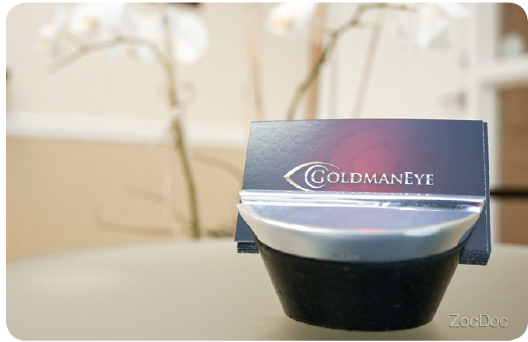
SLOW BUT STEADY
As the practice’s physical space expands, so will the professional staff. “Do I plan to take on more optometrists or ophthalmologists once I have more space? Absolutely,” says Dr. Goldman. “I think the key to that is that, once they come onboard, the culture is already set, and the systems are already in place. Those who come onboard are going to see how it works here, and if they like it, they’re going to fit right in, and if they don’t, we’re going to know it immediately, and it’s not going to work.”
Dr. Goldman is realizing his dream of a small concierge practice staffed by colleagues who work well together and inspire patients’ loyalty. That does not mean that there have not been growing pains and lessons learned. “One of the things that was most challenging was getting up to speed on basic business issues,” he remarks. “I think I’m good at ophthalmology, but I’m terrible at business. I’d never done it before, so it’s been a learning process. I remember, when I first got my keys to my practice space from the real estate agent, she asked where I was going to display my occupancy license. I didn’t have any idea what that was. At the last minute, I was running around the town hall trying to get the signatures that I needed and trying to get the fire marshal to come see the space so that I could open my doors to patients. It was not an insurmountable hurdle, but it was stressful.”
Another challenge is deciding when and how much to expand. “The desire is strong to expand as quickly as possible, but I would urge others, especially if they’re starting a practice on their own, to hold out as long as possible, because as soon as [they] start doing that, the ball gets rolling, and [the] overhead will start to creep up,” he comments. “My advice is to grow slow and maximize the potential for low overhead for as long as possible.”
ALONE BUT NOT LONELY
Some suggest that solo practitioners are at a disadvantage because they are isolated and lack interaction with their peers. Dr. Goldman says he has ample opportunity for virtual and actual networking with fellow ophthalmologists. “As a solo practitioner, even though I’m on my own, I do refer patients to retina specialists, and when they have patients who require the services of an anterior segment surgeon, they refer them to me,” he says. “It’s the same with oculoplastics and pediatrics. Even though I’m not part of an internal network in a group practice, I have a very large external network of providers with whom I work.”
His practice is doing well in South Florida’s highly saturated ophthalmic surgery market. He says it is important to practice where you want to live. “Our staff stands by the idea that, if you do good work and provide good care, no matter how steep the competition is, the patients will find you, and they’ll come back to you,” he says. “That’s not saying that our neighboring practices are not good, but I think we offer a little more of a personal touch.”
Rochelle Nataloni
• freelance medical writer with 25 years’ experience specializing in eye care, aesthetics, and practice management
• (856) 401-8859; rochellemedwriter@gmail.com; Twitter @JustRochelleN; www.linkedin.com/in/rochellenataloni

